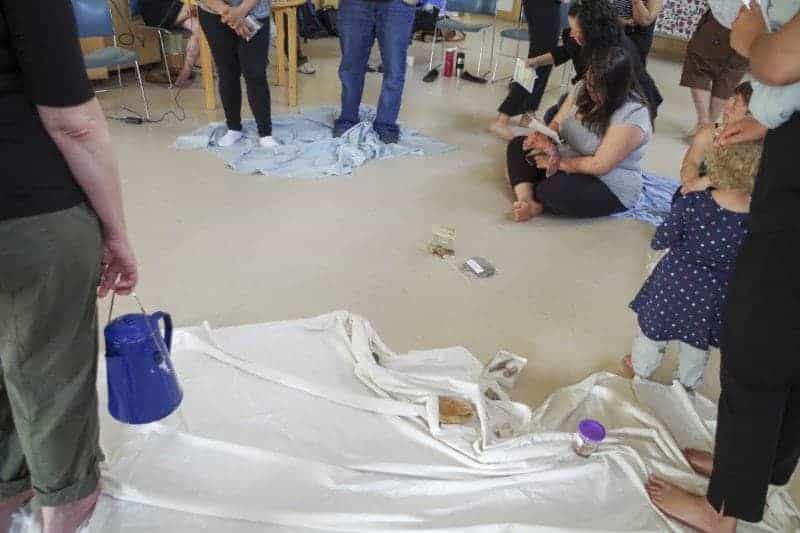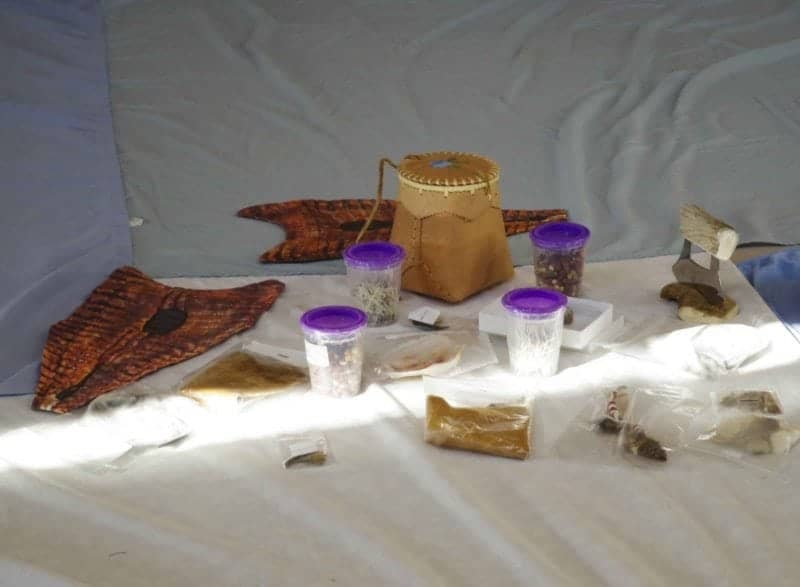Twenty-five people gathered at the Baker Community Centre on Wednesday to experience Canada’s colonial history firsthand.
Certificate of adult teaching students from Aurora College, community members and two children who tagged along with their parents took part in the Blanket Exercise. During an hour of experiential learning, the exercise took participants from a Canada prior to European contact through its colonial history, up to the present day.
Participants took on the role of Canada’s indigenous peoples. They gathered on blankets spread across the floor, signifying indigenous lands. During the experience the blankets grew smaller and further apart, participants disappeared from the game due to warfare, disease, residential schools and the sixties scoop. Finally, they unfolded parts of their blankets, small victories signifying land claims signed in the NWT.

Aurora college student Mishelle Lavoie said she went into the experience not wanting to know too many details about it. Rather, she wanted to feel everything as fresh and raw as possible.
“It was pretty intense at some points,” she said, adding the exercise brought back memories of the survivor stories she heard while she was assisting with the Truth and Reconciliation Commission’s visits to the territory.
Exercise narrator Roy Dahl said he has to distance himself emotionally from the game's content as it stirs up memories of his own experience as a child of the sixties scoop and the ongoing suicide crisis facing his Pikangikum First Nation in northern Ontario.
“A lot of people don’t know about the history,” he said. “A lot of people assume that Canada is what it is on the basis of discovery and divine right and it’s not. We were here, when you look at the original maps of North America there were literally 600 nations here.”
Dahl added he feels that in order for reconciliation to happen, all Canadians including new immigrants need to educate themselves.
The exercise started with a prayer from elder Paul Andrew and ended with a sharing circle. Andrew, who is Sahtu Dene and former chief of Tulita, said the blanket exercise is highly effective as it inserts participants right into the experience of losing land and culture.
At the start of the exercise, the blankets are spread across the entire floor and by the end they are crumpled islands separated from one another with barely enough room for people to sit on.
“Aboriginal people, being hunters and gatherers and trappers, they need a lot of land for their economy. People begin to understand that much better,” he said.
“I think that Canada is already a great country. We can make it even better, if we learn from each other, we can learn from the mistakes and I think we can do so much better in the future. And I see this as the start of it.”
Katy Quinn, a Blanket Exercise co-ordinator for Eastern Canada, said she has seen an exponential increase in people participating in the last five years. She credits the Truth and Reconciliation Commission for this.
“(The TRC) really emphasized for people the need to really educate themselves. For Canadians to better understand this process of colonization in Canada,” she said.
This is the 20th year the Blanket Exercise has been used by groups ranging from governments, church groups and schools. Even the RCMP Alberta Division uses it as part of their indigenous cultural training. It was first developed in response to the 1996 report of the Royal Commission of Aboriginal Peoples to keep the learnings of the report alive.
Fact File: History in the Blanket Exercise
1870s - The first residential schools open, 150,000 students attended these schools
1876 - The Indian Act is passed, removing self-government for indigenous peoples
1960 - Indigenous people are given the right to vote in federal elections
1960s - During the sixties scoop, thousands of children are taken from their parents and placed in non-indigenous homes
1984 - Inuvialuit Land Claims Settlement Act gives the Inuvialuit control over their resources, making it the first comprehensive land claim north of 60
1985 - Indigenous peoples who lost their Indian status through marriage and other discriminatory practices regain status under the Indian Act
1996 - The last residential school closes
1999 - Nunavut is created
2008 - Prime Minister Stephen Harper apologizes on behalf of the Government of Canada for residential schools
2015 - The Truth and Reconciliation Commission publishes its final report
2015 - Deline First Nation final self-government agreement signed
Sources: Canadian Encyclopedia, Deline Got'ine Government
